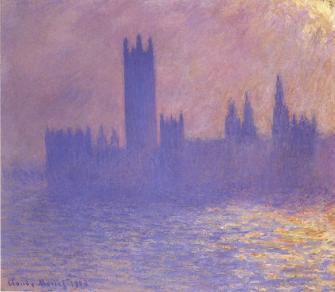
Claude Monet (French, 1840–1926). Houses of Parliament, Effect of Sunlight, 1903. Oil on canvas. Brooklyn Museum, Bequest of Grace Underwood Barton, 68.48.1

Claude Monet (French, 1840–1926). Houses of Parliament, Effect of Sunlight, 1903. Oil on canvas. Brooklyn Museum, Bequest of Grace Underwood Barton, 68.48.1
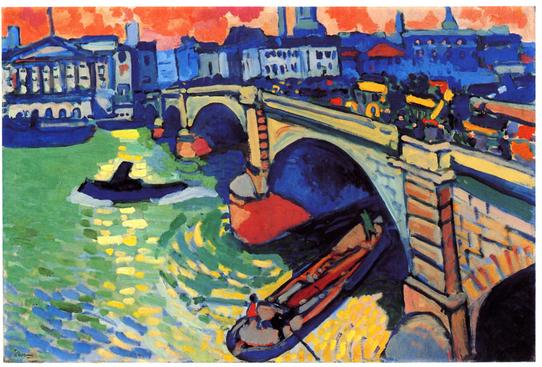
André Derain (French, 1880–1954). London Bridge, 1906. Oil on canvas. The Museum of Modern Art, New York. Gift of Mr. and Mrs. Charles Zadok
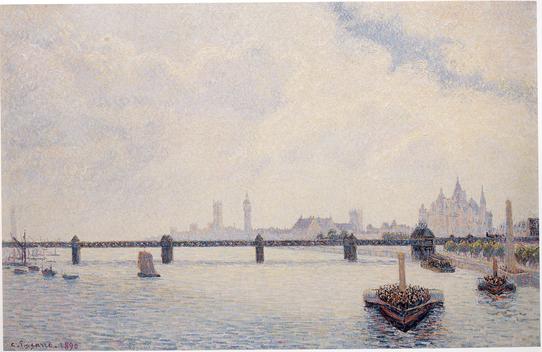
Camille Pissarro (French 1830–1903). Charing Cross Bridge, London, 1890. Oil on canvas. National Gallery of Art, Washington, D.C. Collection of Mr. and Mrs. Paul Mellon
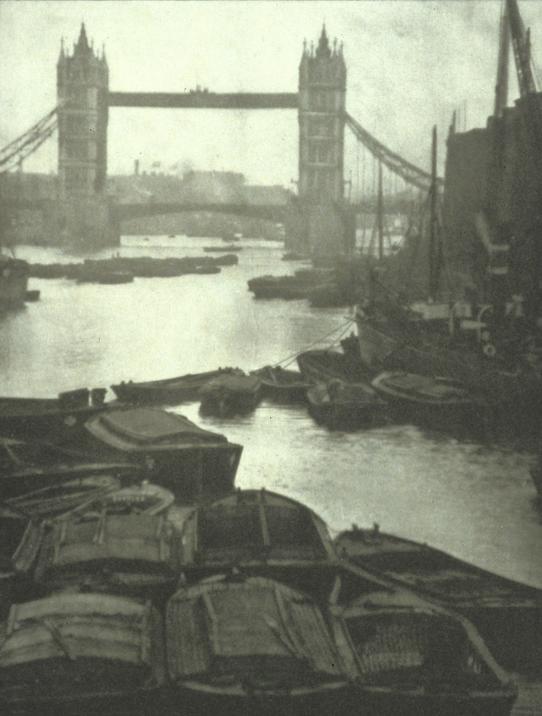
Alvin Langdon Coburn (British, born United States, 1882–1966). The Tower Bridge, 1909. Photogravure. Museum of Fine Arts, St. Petersburg, Florida. Museum purchase with funds provided by the Collectors Circle
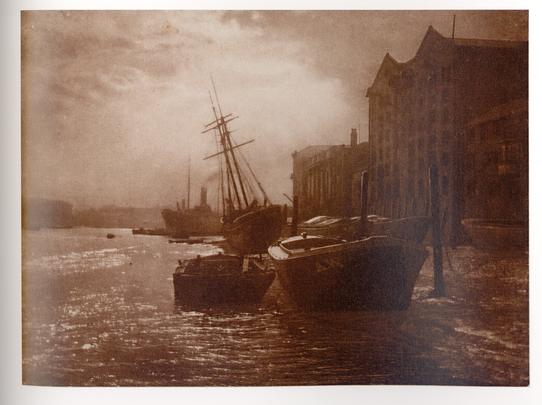
Charles Job (British, 1853–1930). The Thames below London Bridge, n.d. Bromoil print. Courtesy of the Royal Photographic Society at the National Museum of Photography, Film and Television, Bradford, England
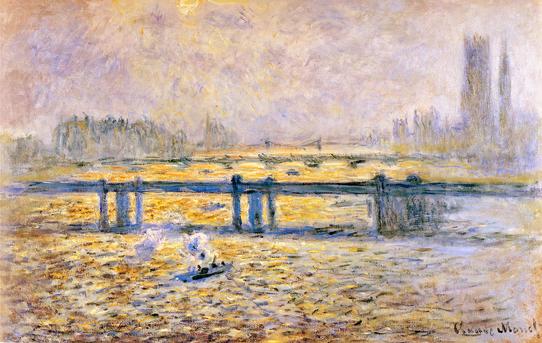
Claude Monet (French, 1840–1926). Charing Cross Bridge, Reflections on the Thames, 1901–04. Oil on canvas. The Baltimore Museum of Art. The Helen and Abram Eisenberg Collection
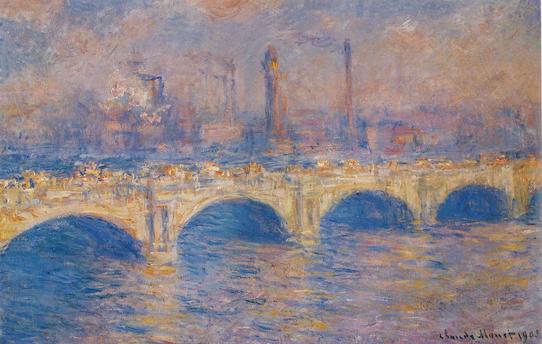
Claude Monet (French, 1840–1926). Waterloo Bridge, London, circa 1903. Oil on canvas. Carnegie Museum of Art, Pittsburgh. Acquired through the generosity of the Sarah Mellon Scaife Family

Bertha Jacques (American, 1863–1941). Rain on Thames, 1913. Etchings on paper. Museum of Fine Arts, St. Petersburg, Florida. Museum purchase

Joseph Pennell (American, 1857–1926). Tower Bridge, Evening, 1905. Etching on paper. Prints and Photographs Division, Library of Congress, Washington, D.C.

James McNeill Whistler (American, 1834–1903). Rotherhithe, 1860. Etching and drypoint on Japan paper. The Baltimore Museum of Art. The George A. Lucas Collection. Purchased with funds from the State of Maryland, Laurence and Stella Bendann Fund, and contributions from individuals, foundations, and corporations throughout the Baltimore community
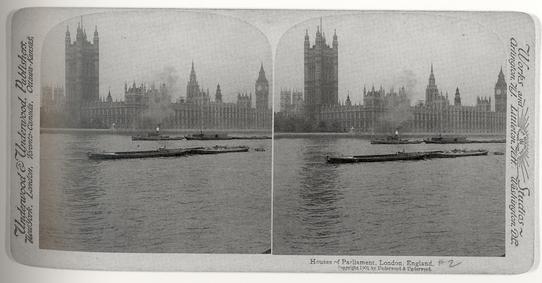
Underwood & Underwood. Houses of Parliament, London, England, 1901. Stereograph. Prints and Photographs Division, Library of Congress, Washington, D.C.
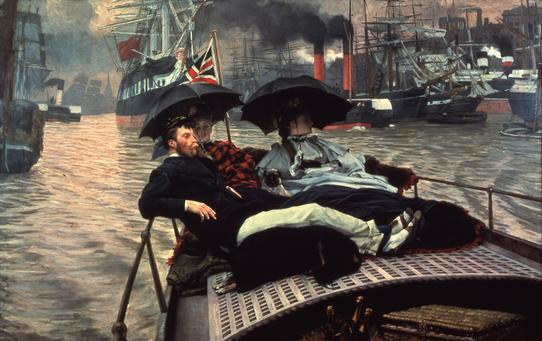
James Tissot (French, 1836–1902). The Thames, 1876. Oil on canvas. Wakefield Art Gallery, Wakefield, England

Winslow Homer (American, 1836–1910). The Houses of Parliament, 1881. Watercolor on paper. Hirshhorn Museum and Sculpture Garden, Smithsonian Institution, Washington, D.C. Gift of Joseph H. Hirshhorn, 1966
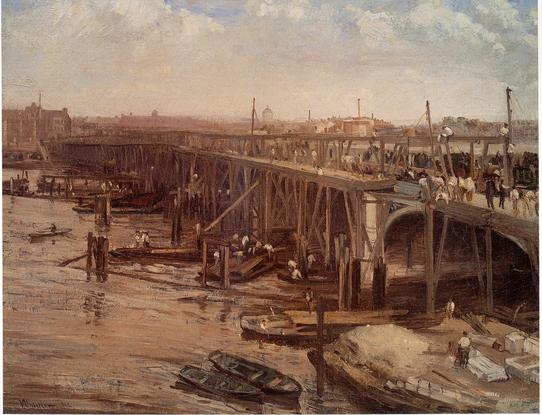
James McNeill Whistler (American, 1834–1903). The Last of Old Westminster, 1862. Oil on canvas. Museum of Fine Arts, Boston, A. Shuman Collection
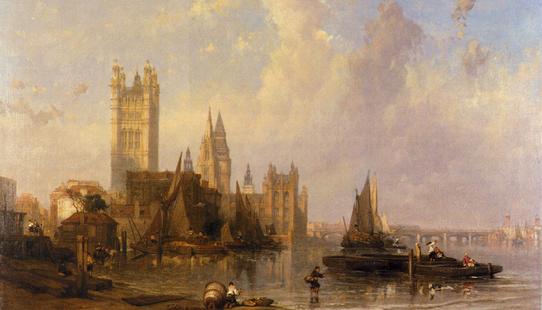
David Roberts (British, 1796–1864). The Houses of Parliament from Millbank, 1861. Oil on canvas. Museum of London. The acquisition of this painting was supported by the Heritage Lottery Fund
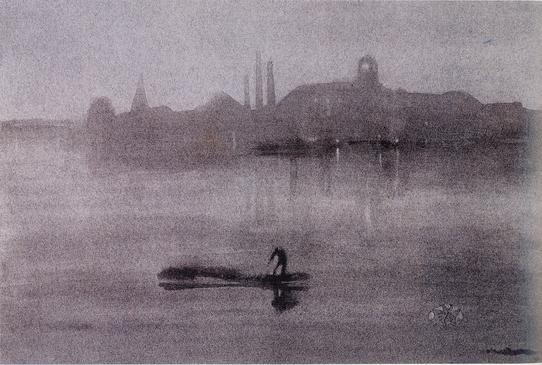
James McNeill Whistler (American, 1834–1903). Nocturne: The River at Battersea, 1878. Lithotint on paper. S. P. Avery Collection, Miriam and Ira D. Wallach Division of Art, Prints and Photographs, The New York Public Library, Astor, Lenox, and Tilden Foundations
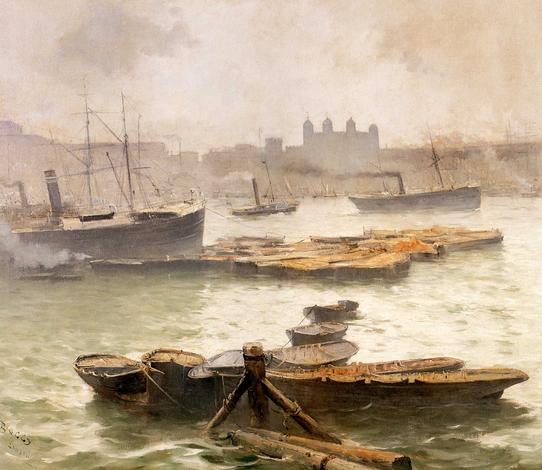
Frank Myers Boggs (American, 1855–1926). On the Thames, 1883. Oil on canvas. The Metropolitan Museum of Art, New York. George A. Hearn Fund, 1909
Monet’s London: Artists’ Reflections on the Thames, 1859–1914
May 27–September 4, 2005
In the mid-1860s, when the French historian and philosopher Hippolyte Taine published his Notes on England, he was particularly struck by the “docks, warehouses, ship-building and repairing yards, workshops, dwelling houses, accumulation of goods . . . a vast apparatus of unceasing, regular and gigantic labor” that characterized London at the height of the British Empire. Commenting on the River Thames, he described it as “enveloped in a fog of smoke irradiated by light. The sun turns it to golden rain, and the water, opaque, shot with yellow, green and purple, gleams and glitters as its surface lifts and falls, with strange and brilliant lights. . . . Nothing here is natural: everything is transformed.”
The object of such compelling observations also attracted artists of all nationalities and inclinations, from traditional English draftsmen who chronicled the topography of the Thames to such figures as James McNeill Whistler, Claude Monet, and André Derain, who produced more subjective evocations of the river and its surroundings. Some artists were commissioned to document the enormous changes that took place on the Thames during the second half of the nineteenth century, from the construction of bridges and sewers to the new embankments that provided picturesque promontories from which to observe this epicenter of industrial activity. Others used the Thames as a symbol of corruption because of the poverty, disease, and crime associated with its docklands and wharves. Artists chronicled the broad range of river subjects in an equally diverse array of media, from oil paintings and watercolors to etchings, lithographs, and the recently invented medium of photography.
This exhibition documents the multifaceted excitement aroused by the Thames in the second half of the nineteenth century and the early years of the twentieth, seen through the eyes of a wide variety of artists whose very definition of art was changing in step with the scenery they depicted. Indeed, Whistler wrote in a famous lecture of 1885 that it was only the artist who could understand the teeming life of the Thames:
And when the evening mist clothes the riverside with poetry, as with a veil, and the poorer buildings lose themselves in the dim sky, and the tall chimneys become campanili, and the warehouses are palaces in the night, and the whole city hangs in the heavens, and fairy-land is before us—then the wayfarer hastens home; the working man and the cultured one, the wise man and the one of pleasure, cease to understand, as they have ceased to see, and Nature, who for once has sung in tune, sings her exquisite song to the artist alone, her son and her master—her son in that he loves her, her master in that he knows her.
Monet’s London: Artists’ Reflections on the Thames, 1859–1914 is organized and circulated by The Museum of fine Arts, St. Petersburg, Florida, and has received indemnification from the Federal Council on the Arts and the Humanities. British Airways is the official airline of the exhibition.
The exhibition in Brooklyn is made possible, in part, through the generosity of

Additional generous support is provided by

and
